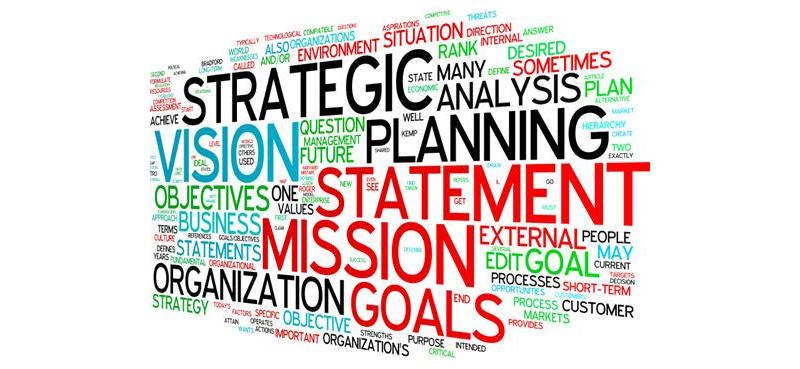While the term “strategic initiative” may sound like hyped business jargon, it’s by no means useless. Strategic initiatives are the compass that guides the business and toward future goals. A strategic initiative is not just a project, it is composed of multiple projects working together to serve the needs of the larger corporation. Strategic initiatives are large and complex, requiring the program manager to steer that large ship. Find out everything related to strategic initiatives today in this article.
What is Strategic Initiative?
The means by which a company makes its objectives and vision a reality are its strategic initiatives. Companies need to deliberately develop a portfolio of strategic projects if they want to stay ahead of the competition. Such projects frequently coincide with the company’s top strategic goals, and as a result, there is frequently a lot of pressure to carry them out successfully.
Multiple projects can be included in a strategic initiative, and numerous strategic initiatives might collaborate to accomplish a more ambitious, more expansive aim. A business may assess how well its existing projects fit with its strategic goals before putting them into action and can get rid of any that might not have an impact.

Types of strategic initiatives
- Company level
The topic of which markets a company should compete in is addressed by corporate-level strategy. A software business that creates mobile operating systems, for instance, could aim to grow by producing phones. It can achieve this by creating its own hardware or by forming a shared-value partnership with an established manufacturer. - Business level
Enterprise-level tactics include steps you may take to win in your target market. How to outperform the competition is one of the main issues that businesses tackle at the business level. - Functional level
Individual organizational departments or groups are referred to as the functional level. The corporation and corporate-level strategy’s procedures are intended to be improved by the functional-level strategy. A functional-level approach in the restaurant chain example may entail the marketing division using the findings of taste testing in advertising and other promotional materials.
Elements of strategic initiatives

- Making a difference
An effective strategic initiative moves the organization towards the version of itself imagined in its vision, so the main idea is to create change. The initiative also introduces new activities or changes to activities. - Well-defined scope
Scope refers to the small details of an effort, such as the resources, activities, and time required to complete it. Each strategic initiative should have clear start and end dates and milestones or deadlines for the key outcomes or deliverables to be accomplished throughout the initiative. - Realization of the organization’s vision
The purpose of a strategic initiative is the realization of the organization’s vision. One of its strategic initiatives could be to allocate more budgets to engineering and research and development to develop long-lasting, efficient engines. - Close the performance gap
The performance gap is the difference between ideal and actual results. An effective strategic initiative will address the gap and provide a timeline for closing it within a given time frame.
Steps to Develop a Strategic Initiative Plan
- Step 1: Set a goal
Goals are quantifiable, practical, long-term objectives. The moment to define them is when strategic initiatives are being established. They serve as markers for the start of new periods following the conclusion of older ones. - Step 2: Set Strategy
The next stage is to decide how you will reach your objective. To find areas where efficiencies may be made, you can monitor program data. Alternatively, you can teach your team or sales force to provide better goods or services and reach a wider audience. - Step 3: Make a Plan
The strategies stay the same whether an endeavor is strategic or not. You should begin with a bigger, deliverable job and then break it down into smaller, more manageable projects with a specified time frame and timetable in order to achieve your goals. Your project plan should be visible in the sense that everyone on your team can see it, enabling efficient teamwork. They must be aware of their roles and duties inside the project if they are to guarantee the strategic initiative’s success. - Step 4: Enlist your team
You must assemble your team after you have a strategy and a plan. Everything becomes a reality after they make a purchase. They are responsible for executing it. You may make sure they’re on track and get feedback by providing them with instructions, monitoring their progress, and setting up regular meetings with them.
Strategic initiatives examples
Healthcare Strategy Initiative
- Develop an Age-Friendly Health System Model and make it available to 20% of US hospitals and health systems by December 31, 2021 – Jane Doe
- Connect 50 hospitals with safer practice providers to reduce maternal morbidity and mortality by March 31, 2022 – John Doe
Production Strategy Initiative
- Reduce on-site critical failures from 40% to 15% by December 31, 2022 – John Doe
- Reduce accidents and injuries to <10% by April 31, 2022 – Jane Doe
Retail Strategy Initiative
- Open 12 new stores in key European locations by December 31, 2021 – John Doe
- 5% off wasted products by July 15 – Jane Doe
Conclusion
A strategic initiative is a specific, actionable plan that is designed to achieve a specific strategic goal or objective. It is a key tool for organizations to achieve their long-term goals and objectives. These initiatives are typically developed by senior management and are aligned with the overall strategic direction of the organization. Successful implementation of strategic initiatives requires clear communication, strong leadership, and effective project management.


